"Afghanistan: Hidden Treasures from the National Museum, Kabul" at National Gallery of Art
Male or female head (Aï Khanum, Temple with niches, Courtyard), 2nd century BC, unfired clay. National Museum of Afghanistan. ©Thierry Ollivier / Musée Guimet
WASHINGTON, DC.-Extraordinary artifacts uncovered in modern-day Afghanistan—once the heart of the Silk Road linking cultures from Asia to the Mediterranean—long thought stolen or destroyed during some 25 years of conflict until the dramatic announcement of their existence in 2003, begin their United States tour at the National Gallery of Art, Washington, May 25 through September 7, 2008.
The exhibition, co-organized by the National Geographic Society and the National Gallery of Art, will travel to the Asian Art Museum, San Francisco, October 24, 2008 through January 25, 2009; the Museum of Fine Arts, Houston, February 22 through May 17, 2009; and The Metropolitan Museum of Art, New York, June 23 through September 20, 2009. After its tour through Paris, Turin, and Amsterdam, the show was reorganized for the United States and accompanied by a new catalogue and a video documentary produced by National Geographic and narrated by the celebrated author, Khaled Hosseini.
Revealing Afghanistan’s multicultural heritage are some 228 objects ranging in date from 2200 BC to the second century AD. Drawn from four archaeological sites, they belong to the National Museum of Afghanistan in Kabul and include fragmentary gold bowls with artistic links to Mesopotamia and Indus valley cultures (modern-day Pakistan) from the Bronze Age site of Tepe Fullol; bronze and stone sculptures and a gilded silver plaque from the former Greek colony at Aï Khanum (“Lady Moon”); bronzes, ivories, and painted glassware that had been imported from Roman Egypt, China, and India, and excavated from ancient storerooms discovered in the 1930s and 1940s in Begram; and more than 100 gold ornaments from the “Bactrian Hoard,” found in 1978 in Tillya Tepe, the site of six nomad graves, and revealing a synthesis of Greek, Roman, Persian, Indian, Chinese, and Siberian styles.
The exhibition is organized by the National Geographic Society and the National Gallery of Art, Washington in association with the Asian Art Museum of San Francisco; the Museum of Fine Arts, Houston; and The Metropolitan Museum of Art, New York.
It is supported by a grant from the National Endowment for the Humanities and an indemnity from the Federal Council on the Arts and the Humanities.
At the National Gallery of Art the exhibition is made possible by the E. Rhodes and Leona B. Carpenter Foundation. It is also supported by The Charles Engelhard Foundation. Corporate support is provided by National Construction & Logistics and Hamed Wardak.
The works in the exhibition are the sole property of the Islamic Republic of Afghanistan.
Terry Garcia, executive vice president for Mission Programs, National Geographic: “We are delighted to partner with the National Gallery of Art and the National Museum of Afghanistan in bringing these rare and precious items to the United States. Our goal is to introduce this unique collection of objects to a broad audience and raise awareness and understanding about the little-known ancient cultures of modern-day Afghanistan. We also want to tell the heroic story of the Afghans who risked their own safety to hide and protect these treasures.”
His Excellency Said Tayeb Jawad, Ambassador of Afghanistan to the United States: “Afghanistan has always been the heart of Asia. Afghanistan’s centrality in the Silk Road created a rich mosaic of cultures and civilizations. Although this mosaic was shattered by war and terror, both the spirit of the Afghan people and our cultural heritage survived. These priceless artifacts are a testament to the Afghan people and to the heroism of the brave and selfless Afghans who preserved and protected them. This exhibition is a celebration of Afghanistan as much as it is an expression of our appreciation for the global partnership between our ancient nation, the international community, and our friends in the United States.”
Earl A. Powell III, director, National Gallery of Art: “The National Gallery of Art has a long tradition of bringing works of exceptional quality and merit from other cultures and periods to the United States. We are very pleased to be working closely with National Geographic and the National Museum of Afghanistan, Kabul, to introduce the American public to these archaeological treasures, their history, and their legacy.”
Bruce Cole, chairman, National Endowment for the Humanities: "The artifacts featured in this collection are more than dazzling exhibition pieces; they serve as primary documents recording the vitality of Afghanistan’s rich cultural heritage. The National Endowment for the Humanities is proud to have supported the preservation, cataloging, and exhibition of these treasures as part of our broader 'Rediscovering Afghanistan' initiative, and we are delighted to play a part in bringing this collection to citizens across our nation."
Hamed Wardak, president, NCL: “National Construction & Logistics is honored to sponsor this historic exhibition of Afghanistan: Hidden Treasures from the National Museum, Kabul. The emergence of these objects after 25 years of struggle is emblematic of the beauty of Afghanistan and the resilient spirit of its people. This exhibition brings the rich and diverse culture of Afghanistan to the Washington area, and we are proud to help make that possible.”
Fredrik Hiebert, exhibition curator and National Geographic Archaeology Fellow: “This exhibition is the culmination of many years of work by the Afghans. Without their courage and commitment, these objects would not exist today. Having worked closely with Afghan officials since 2003 on the preservation and inventory of the objects, I am honored to be part of the effort to share these treasures with audiences in the United States and ultimately to enhance the understanding of Afghanistan’s rich cultural heritage.”
Exhibition Layout and Object Highlights - The exhibition will begin with a new map of modern Afghanistan created by National Geographic, which highlights the four archaeological sites featured in the show. Specially commissioned maps will be on display throughout the exhibition, including one that illustrates more than 1,500 archaeological sites, known to be in Afghanistan, which range in date from the prehistoric era through the 17th century.
The exhibition is organized by site, beginning with objects from Tepe Fullol in northern Afghanistan. In 1966, farmers near the Afghan village of Fullol discovered the first evidence of a Bronze Age civilization in the region. Gold from the nearby Oxus riverbed most likely provided the gold for several bowls—part of a burial cache—found at the site, including a fragment of a bowl depicting bearded bulls from 2200 to 1900 BC.
A bowl fragment features a majestic bearded bull ©Thierry Ollivier / Musée Guimet
The second group of artifacts, from the site of the former Greek city Aï Khanum in a region that was conquered by Alexander the Great, reflects the Mediterranean influence in the area between the fourth and second centuries BC. The works include Corinthian capitals from before 145 BC, similar to one shown to the late Afghan King Zahir Shah in 1961, which led to the discovery of the site of Aï Khanum. They also include bronze and ivory sculptures representing Greek figures, as well as images of Central Asian figures carved in a Hellenistic style. The oldest artifact found is a ceremonial plaque made of gilded silver depicting Cybele, the Greek goddess of nature presiding within an orderly cosmos. There will be a digital reconstruction of the city of Aï Khanum as well as a site map.
Portrait, probably of the Gymnasiarch Strato (Aï Khanum, Gymnasium), 1st half of the 2nd century BC, limestone, National Museum of Afghanistan. ©Thierry Ollivier / Musée Guimet.
A large ceremonial plaque in silver and gold from the third century B.C. ©Thierry Ollivier / Musée Guimet
Items of trade from the third site, at Begram, date from between the first and second centuries AD. Elaborately carved Indian ivory reliefs and figurines used as decorative elements on furniture will be digitally reconstructed and shown on a monitor in the gallery with a site map of Begram. A painted goblet depicting figures harvesting dates and a bronze mask of Silenus are just a few of the artifacts discovered that shed light on the role of Afghanistan in the network of trade along the Silk Road.
An ivory statue from Begram. (1st or 2nd century A.D.) ©Thierry Ollivier / Musée Guimet
A small relief, Begram ivory ©Thierry Ollivier / Musée Guimet
A plaque from Begram, Afghanistan. (1st or 2nd century A.D.) ©Thierry Ollivier / Musée Guimet
A bronze mask of Selenus from Begram. ©Thierry Ollivier / Musée Guimet
A goblet depicting figures harvesting dates, from Begram. ©Thierry Ollivier / Musée Guimet
The fourth group consists of some 100 gold objects dating from the first century BC to the first century AD, they were among those discovered in 1978 by a Soviet-Afghan team led by Viktor Sarianidi at Tillya Tepe in northern Afghanistan. The site contained jewelry and gold ornaments from the graves of six nomads who overran Bactria in about145 BC and brought an end to the Greco-Bactrian kingdoms that had flourished there. The graves contained thousands of gold objects sewn onto the burial shrouds and clothing of the deceased. On view will be an exquisite crown, as well as necklaces, belts, rings, and headdresses—most made of solid gold with insets of semiprecious stones such as turquoise and garnets. Many of the Bactrian objects reflect local artisans’ distinctive blend of motifs known from Greek, Roman, Indian, and Chinese art.
Photo: Thierry Ollivier/Agence France-Presse — Getty Images
A small solid-gold Aphrodite that was once decorated with little pine-nut pieces of turquoise has a Greek “Winged Victory” drape, sickle-shaped wings and an Indian beauty mark. ©Thierry Ollivier / Musée Guimet.

/https%3A%2F%2Fprofilepics.canalblog.com%2Fprofilepics%2F1%2F0%2F100183.jpg)
/https%3A%2F%2Fstorage.canalblog.com%2F03%2F02%2F119589%2F96711876_o.jpg)
/https%3A%2F%2Fstorage.canalblog.com%2F11%2F31%2F119589%2F94773502_o.jpg)
/https%3A%2F%2Fstorage.canalblog.com%2F20%2F83%2F119589%2F94772815_o.jpg)
/https%3A%2F%2Fstorage.canalblog.com%2F26%2F72%2F119589%2F75604929_o.jpg)
/https%3A%2F%2Fstorage.canalblog.com%2F59%2F60%2F119589%2F26458628_o.jpg)
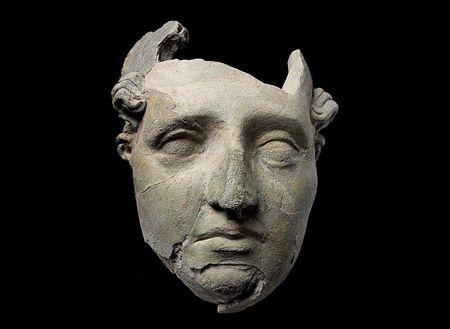
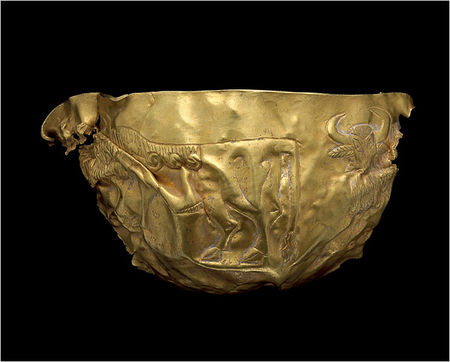


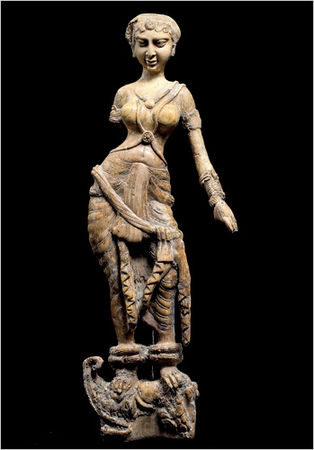
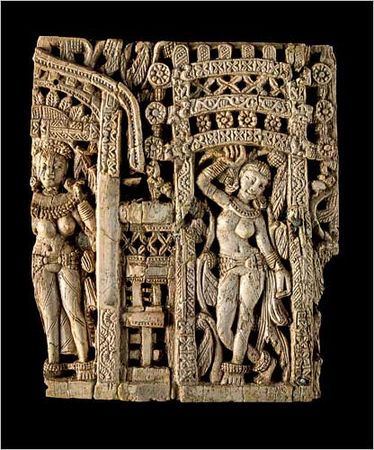

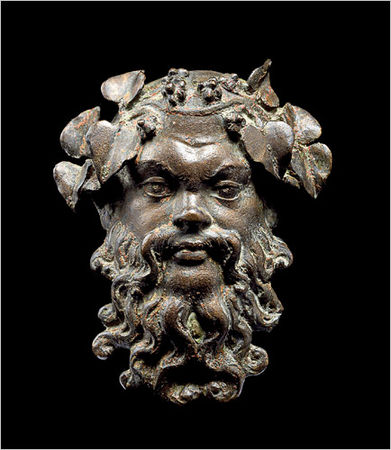





/image%2F1371349%2F20240425%2Fob_c453b7_439605604-1657274835042529-47869416345.jpg)
/image%2F1371349%2F20240425%2Fob_59c6f0_440358655-1657722021664477-71089985267.jpg)
/image%2F1371349%2F20240425%2Fob_07a28e_440353390-1657720444997968-29046181244.jpg)
/image%2F1371349%2F20240425%2Fob_0b83fb_440387817-1657715464998466-20094023921.jpg)